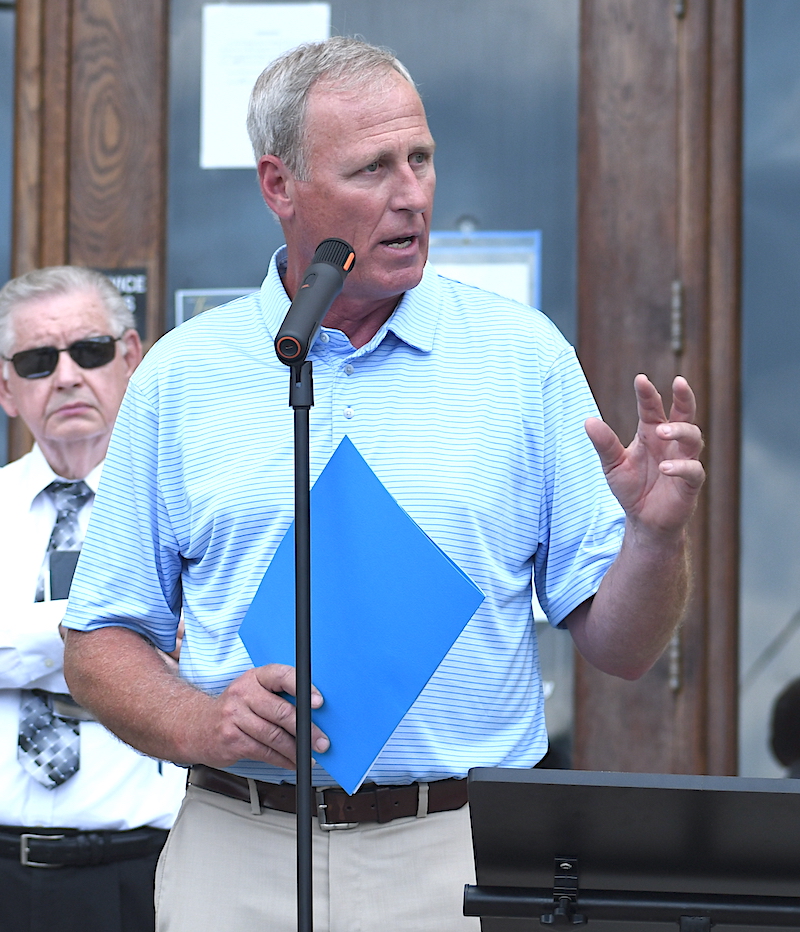Inactivity is not good for us
Published 1:32 pm Saturday, October 14, 2017
A happier life is an active life. Doing nothing does not generate much in the realm of feeling good about yourself and is detrimental to your health.
A friend of mine reflected on his career and often six day work weeks and said, “Those were the happiest days of my life.” I know of people who live very fulfilling lives of retirement but also know of too many who don’t have much to do or much interest in doing a whole lot.
Sometimes sickness or injury keeps us from doing anything. This can happen to us all and it’s no fun being sick and shut-in the house. Inclement weather can drive us inside and for that reason many people dread the cold wintry months that are sure to come.
Trending
However, we all need to strive more in our daily activity. You don’t have to be a member of a high priced gym to move every day. You don’t have to have a lucrative retirement to move every day. If you can walk and move your arms you are really on your way to activity.
Whether you live in the city or country we all need to think more every day about getting out of the house and being in motion. Walking, jogging, mowing grass, working in the yard, house cleaning or more exercise, we all need it.
Behind my office is a nursing home. A man comes out of that nursing home almost every day in a wheelchair. He has no legs. His wheelchair is motorized. However, every day he pushes himself to go the public library or down the road to one of a couple of small restaurants. He hasn’t given up. I want to challenge us all to not give up and push ourselves a little more in the realm of activity.
In this day and time we all are in danger of terminal inactivity. Computers, televisions, social media, desk jobs, comfortable lounge chairs and riding in the car can spell long bouts of inactivity.
Researchers have been investigating ways to reduce our risk of chronic disease for decades. One big question: How much exercise is needed to prevent disease? The answer is at least 150 minutes per week. According to the U.S. Department of Health and Human Services’ physical activity guidelines, adults should participate in at least 150 minutes of moderate-intensity aerobic physical activity per week, including at least two days of muscle-strengthening activities. While exercising up to 300 minutes per week has even greater health benefits.
What health risks are linked to physical inactivity?
Trending
• Lack of physical activity has clearly been shown to be a risk factor for cardiovascular disease and other conditions.
• Less active and less fit people have a greater risk of developing high blood pressure.
• Physical activity can reduce your risk for type 2 diabetes.
Studies show that physically active people are less likely to develop coronary heart disease than those who are inactive. This is even after researchers accounted for smoking, alcohol use, and diet.
• Lack of physical activity can add to feelings of anxiety and depression.
• Physical inactivity may increase the risk of certain cancers.
• Physically active overweight or obese people significantly reduced their risk for disease with regular physical activity.
• Older adults who are physically active can reduce their risk for falls and improve their ability to do daily activities.
Thousands and thousands of deaths occur each year due to a lack of regular physical activity. In addition: Inactivity tends to increase with age.
Now, please get up and do something. Our health and happiness depend on it.
Thanks to John Hopkins Medicine, Hopkinsmedicine.org and eatright.org for their information.
Glenn Mollette is a syndicated columnist and author of 12 books. He is read in all 50 states. Contact him at GMollette@aol.com. Learn more at www.glennmollette.com Like his facebook page at www.facebook.com/glennmollette






